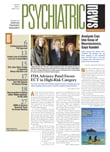A new vaccine developed in conjunction with a disrupted cold virus effectively stopped cocaine from entering the brain of mice in one recent study.
Researchers are hopeful that in a couple of years they can test the vaccine on human subjects, and, if it is successful, they will be one step closer to a new medical approach to treating drug addiction.
The study results, which were published in the January 4 online issue of Molecular Therapy, showed significant differences in the levels of cocaine in mice that received the vaccine compared with those that didn't, and also showed reduced motor activity in mice that received the vaccine.
To create the vaccine, lead investigator Ron Crystal, M.D., explained to Psychiatric News, his team coupled a cocaine analogue called GNC with an adenovirus to create the dAD5GNC vaccine.
The researchers disrupted the adenovirus so that it was not infectious.
Crystal is a professor and chair of the Department of Genetic Medicine at Weill Cornell Medical College in New York.
By bonding the cocaine to the virus, Crystal said, "We are taking advantage of the fact that when the immune system encounters the adenovirus, it will elicit a strong immune response" and produce antibodies that are specific to cocaine, which bond to the virus.
Crystal and his colleagues found that when cocaine was administered intravenously to a group of mice that had received the vaccine, cocaine levels in their brains were reduced by 41 percent, compared with levels recorded in another group of mice that received the cocaine but had not been vaccinated (p<0.002).
Simultaneously, serum levels of cocaine in the vaccinated mice were increased by more than fivefold, compared with mice who did not receive the vaccine. Serum levels collected one minute after cocaine injection showed that 76 percent of the cocaine was associated with antibodies that were produced by the vaccine.
The researchers also looked at a variable they called "hyperlocomotion," or the degree to which mice moved after being administered cocaine.
For this experiment, researchers observed and compared two groups of mice, including a group of 15 vaccinated mice that received cocaine and a group of 15 unvaccinated mice that also received cocaine, as well as a control group of mice that received only a phosphate-buffered solution and no cocaine or vaccine.
Researchers placed the mice in a chamber with infrared beams designed to detect the extent to which they moved inside the chamber.
The mice were given 50 micrograms of cocaine, and the distance they moved was then measured. The researchers found that those who had not received the vaccine traveled a significantly greater distance than vaccinated mice who had received the same dose of cocaine (p<0.0001). In addition, levels of locomotor activity in the vaccinated mice were indistinguishable from those in mice that had received only the phosphate-buffered solution.
The researchers repeated the movement test at three and six weeks after the initial test and achieved the same results.
"Currently, we are testing the vaccine in larger animals," Crystal said, "and we hope to test the vaccine in humans in one to two years."
Crystal said that he is interested in discovering whether humans, once vaccinated with the disrupted cold virus, will produce antibodies against cocaine as the mice did, and if they do, whether study subjects will reduce the amount of self-administered drug.
He hypothesized that the vaccine might be used to target not only cocaine, but also nicotine and heroin as well.
"The results look promising so far," he added.
